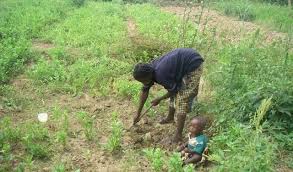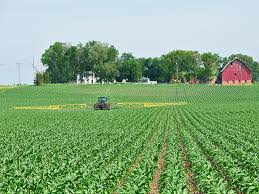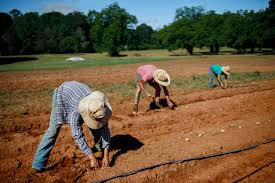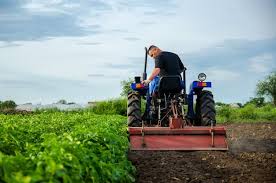Major characteristics of an agricultural project are based on objectives, lifecycle, definite time limits, uniqueness, teamwork, complexity, sub-contracting, risk and uncertainty, customer-specific nature, change, response to the environment, forecasting, rational choice, principle of succession, optimality, control mechanism, multidisciplinary involvement, conflicts, and being part of a large program.
1. Objectives
A project has a set of objectives or a mission. Once the objectives are achieved, the project is treated as completed. For example, the objective of a project may be the construction of a highway connecting two cities ‘A’ & ‘B’, covering a distance of 20 kilometers. Once the construction of the highway is completed, the project comes to an end.
2. Life Cycle
A project has a life cycle. The life cycle consists of the following stages:
i. Conception stage: Where project ideas are conceived.
ii. Design stage: Where detailed designs of different project areas are worked out.
iii. Implementation stage: Where the project is implemented as per the design.
iv. Commissioning stage: Where the project is commissioned after implementation.
Commissioning of a project indicates the end of its life cycle.
Read Also: 12 Medicinal Health Benefits of Emilia Sonchifolia (lilac tasselflower)
3. Definite Time Limit

A project has a definite time limit. It cannot continue forever. For example, the construction of a highway connecting two cities is a project that must be completed within a specified period. In contrast, highway maintenance is an ongoing process that continues indefinitely and, therefore, does not fall under the purview of a project.
4. Uniqueness
Every project is unique; no two projects are similar. Setting up a cement plant and constructing a highway are two distinct projects with unique characteristics. Even constructing a highway between cities A and B and constructing another between cities C and D are unique in view of differences in organization, infrastructure, location, technical specifications, and the people behind the projects.
5. Teamwork
A project normally consists of diverse areas, requiring personnel specialized in their respective fields. An agricultural project calls for the services of experts from various disciplines. Coordination among these diverse areas necessitates teamwork. Thus, an agricultural project can be implemented only through effective teamwork.
6. Complexity
A project is a complex set of activities that span diverse areas. Factors contributing to the complexity of an agricultural project include conducting technology surveys, choosing the appropriate technology, procuring suitable machinery and equipment, hiring the right personnel, arranging financial resources, and executing the project on schedule through proper coordination of activities.
Read Also: Factors Affecting Mineralization and Nitrification Dendrobium Nobile Medicinal Plant
7. Sub-contracting

This characteristic arises from the complexity of a project’s functions and activities. Some tasks may be entrusted to sub-contractors to reduce overall complexity. Sub-contracting is advantageous if it reduces complexity so that the project manager can coordinate the remaining activities more effectively.
In general, the greater the complexity of the project, the more extensive the reliance on sub-contracting. Sub-contracting is particularly beneficial when the sub-contractors are specialized in their field, as this improves the overall quality of the project.
8. Risk and Uncertainty
Risk and uncertainty are inherent in every project. Even if a project appears risk-free, it may only mean that the risk element is not immediately visible; hidden risks may surface when conditions become conducive. Some risk elements can be anticipated and addressed as they emerge, while others cannot be foreseen.
For example, if a cotton yarn-spinning mill project reveals a gradual shift in consumer preference from cotton yarn to synthetic yarn during the feasibility study, machinery can be chosen that is adaptable to both types of yarn.
If full adaptability is not possible, the choice of machinery should aim to avoid major conversion costs should the need arise. Conversely, the sudden entry of a strong competitor or an unexpected government change may upset all forecasts and projections.
9. Customer-Specific Nature
A project is always customer-specific because the products produced or services offered are inherently customer-oriented. It is the customer who decides which product to be produced or which service to be offered, and thus it is the responsibility of any organization undertaking an agricultural project to align its offerings with customer needs.
10. Change
A project is not rigid throughout its lifespan. Changes occur naturally due to various environmental factors. These changes may range from minor adjustments with little impact to major shifts that can alter the very nature of the project.
For instance, during project implementation, if newer technology or equipment becomes available before the originally planned equipment is procured, switching to the latest technology may be wise. Similarly, technological innovations in the manufacturing process might justify a switch to keep the project updated.
11. Response to Environment

Agricultural projects take shape in response to the environment. For example, the Nigerian Government, soon after independence, set up major projects in public sectors such as iron and steel, coal, power generation, and heavy equipment manufacturing. These initiatives were in tune with the needs for developing infrastructure and heavy industries at that time.
12. Forecasting
Forecasting the demand for any product or service that an agricultural project is intended to produce is an important aspect. Only if the forecast gives positive indications is the project pursued for further study. Thus, all agricultural projects involve forecasts that must be accurate and based on sound fundamentals.
13. Rational Choice
Since a project is essentially a scheme for investing resources, the choice of an agricultural project is made after thoroughly studying all available investment avenues and selecting the most rational option among them.
14. Principle of Succession
The implementation of an agricultural project is not fully known in advance. More details emerge as intricacies come to light over time, and project components are modified and finalized successively as the project progresses.
15. Optimality
An agricultural project is always aimed at the optimum utilization of resources for the overall development of the organization or economy. Since resources are scarce and have a cost, their optimum utilization is imperative. Many project management concepts have evolved with the goal of achieving the best possible use of available resources.
16. Control Mechanism
All projects are supported by pre-designed control mechanisms to ensure completion within the scheduled time, within the estimated cost, and with the desired level of quality and reliability.
17. Multidisciplinary
Agricultural projects are multidisciplinary in nature. They utilize the knowledge and expertise of individuals from various fields, thereby enriching the project with diverse perspectives.
18. Conflicts
Projects involving multidisciplinary teams are often characterized by conflicts. Conflicts may arise between project schedules and budgets, between clients and project team members, or even among team members themselves, as well as between project team members and other organizational personnel not directly involved in the project.
19. Part of a Large Program
Agricultural projects are often part of a larger entity known as a “program.” Many projects combined together form a program. For example, launching a satellite into orbit constitutes a program that comprises many interrelated projects.
Do you have any questions, suggestions, or contributions? If so, please feel free to use the comment box below to share your thoughts. We also encourage you to kindly share this information with others who might benefit from it. Since we can’t reach everyone at once, we truly appreciate your help in spreading the word. Thank you so much for your support and for sharing!






